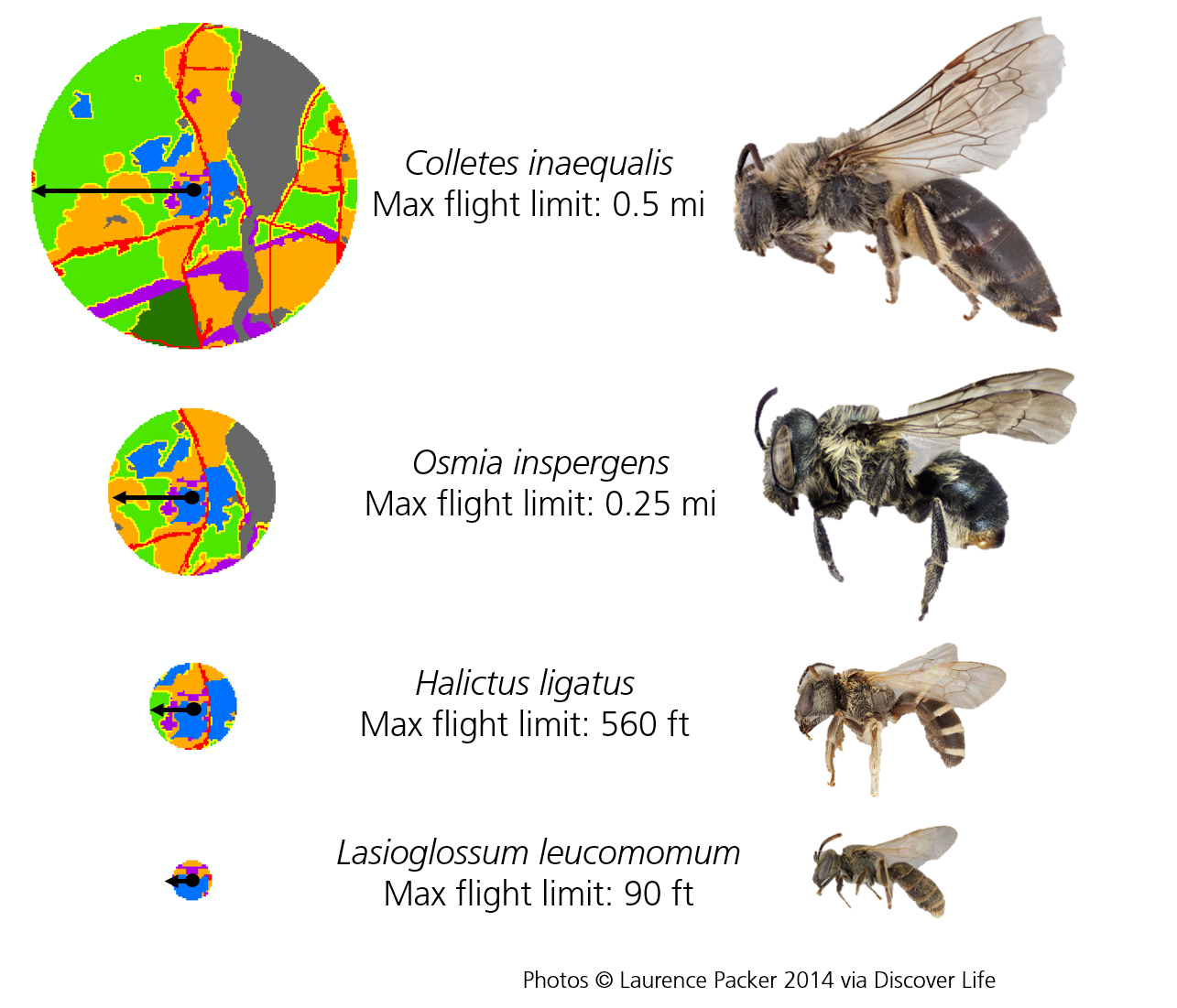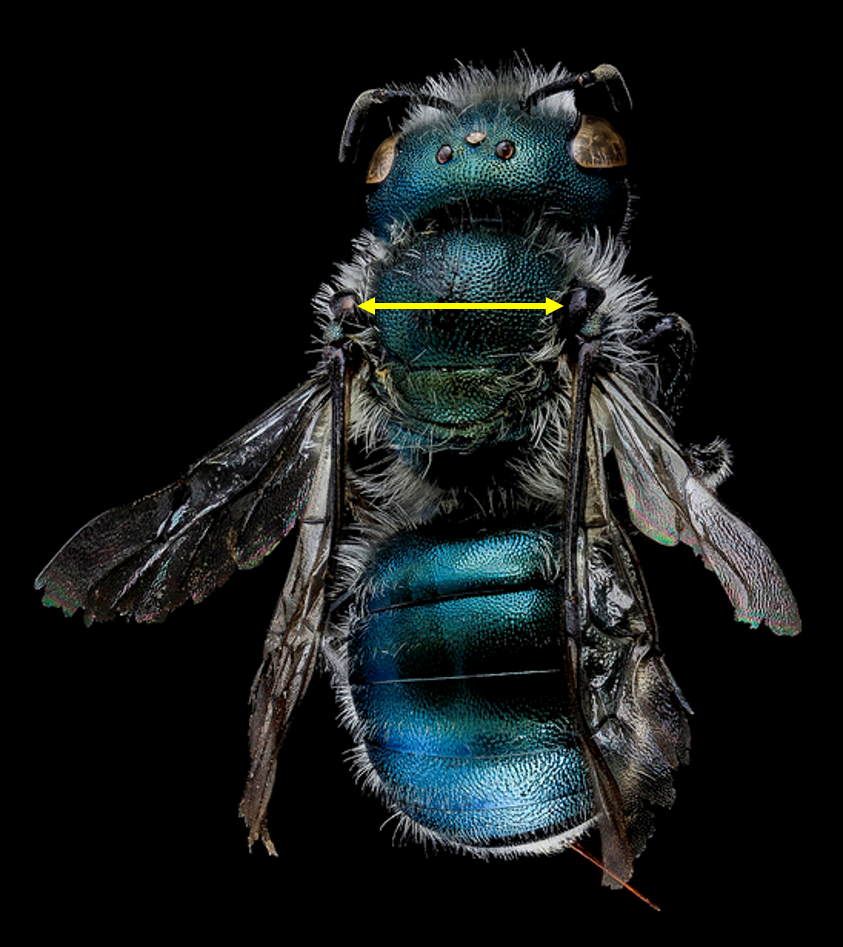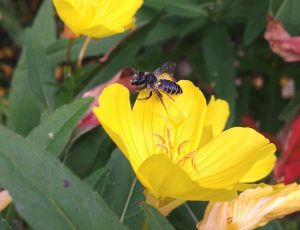Landscape Ecology of Wild Bees
Landscape ecology explores how the composition and arrangement of different types of land across a landscape affects the organisms within that landscape. These landscapes vary in size depending on the organism(s) studied. For example, a wild bee landscape is much smaller than a human landscape.

 Bee landscape size is determined using two principles. First, bees are central place foragers, meaning they find food, or forage, in the area surrounding their nest and then return to their nest. Second, the maximum flight limit of a bee can be estimated by a measure of body size called the intertegular wingspan. This is the distance between the two tegula, the shield-like coverings at the base of a bees wings. Honey bees are the exception to this relationship, however, and have repeatedly demonstrated their ability to fly up to 5 miles to find food. We have calculated maximum flight limits for 14 common Maine wild bees.
Bee landscape size is determined using two principles. First, bees are central place foragers, meaning they find food, or forage, in the area surrounding their nest and then return to their nest. Second, the maximum flight limit of a bee can be estimated by a measure of body size called the intertegular wingspan. This is the distance between the two tegula, the shield-like coverings at the base of a bees wings. Honey bees are the exception to this relationship, however, and have repeatedly demonstrated their ability to fly up to 5 miles to find food. We have calculated maximum flight limits for 14 common Maine wild bees.
 The small size of wild bee landscapes limits where wild bees can survive. Wild bees need the habitat resources necessary to survive within these landscapes, which include nesting substrate and flowering plants for food. Bee habitat resource availability varies across Maine’s wild blueberry production landscape, and therefore some types of land are better suited for wild bee habitat than others. BeeMapper presents eight land cover types in Maine’s wild blueberry production landscape that each provide a unique set of habitat resources to wild bees.
The small size of wild bee landscapes limits where wild bees can survive. Wild bees need the habitat resources necessary to survive within these landscapes, which include nesting substrate and flowering plants for food. Bee habitat resource availability varies across Maine’s wild blueberry production landscape, and therefore some types of land are better suited for wild bee habitat than others. BeeMapper presents eight land cover types in Maine’s wild blueberry production landscape that each provide a unique set of habitat resources to wild bees.
Maine’s wild blueberry production landscape differs from most well-studied agricultural landscapes in that it is forest-dominant and contains a large amount of natural habitat for wild bees within forest and crop field edges and forage associated with wetlands, grasslands, and developed areas. Furthermore, there are two blueberry growing regions within Maine that vary in the composition and arrangement of the eight land cover types providing habitat resources to wild bees.
